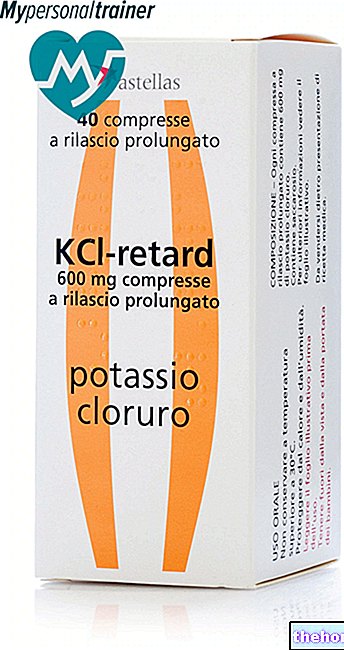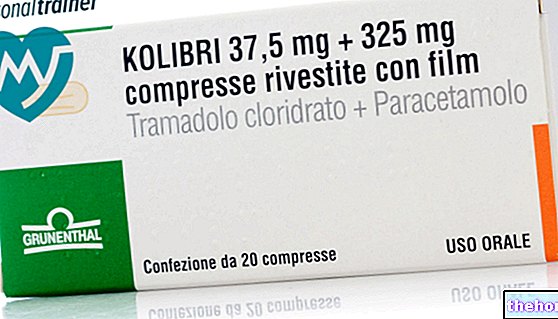Active ingredients: Calcifediol
1,5 mg / 10 ml Oral Drops, Solution-Bottle of 10ml
Why is Didrogyl used? What is it for?
Calcifediol or 25-hydroxycholecalciferol, currently obtained by synthesis, is the first metabolite of vitamin D3 resulting, in its natural state, from the hydroxylation on carbon 25 undergone by vitamin D3 in the liver, under the influence of a microsomal 25-hydroxylase. Calcifediol is therefore the circulating form of vitamin D.
Therapeutic indications
children
- hypocalcemia of the newborn, premature or immature,
- deficient rickets with hypocalcemia,
- Vitamin-resistant rickets,
- renal osteodystrophy and prolonged hemodialysis,
- hypocalcemia due to corticotherapy; from idium hypoparathyroidism
adults
- nutritional osteomalacia due to deficiency or malabsorption,
- osteomalacia due to anticonvulsants,
- osteoporosis with osteomalacic component,
- renal osteodystrophy and prolonged hemodialysis,
- hypocalcemia from liver disease,
- idiopathic or postoperative hypoparathyroidism,
- vitamin D deficiency spasmophilia,
- postmenopausal osteoporosis.
Contraindications When Didrogyl should not be used
Breastfeeding women. Hypersensitivity to vitamin D.
Precautions for use What you need to know before taking Didrogyl
- when didrogyl® will be used in renal osteodystrophies, it will be advisable to monitor the creatinine clearance and not to raise the calcium level above 95 mg per liter;
- didrogyl® will be used with caution in immobilized subjects (high doses) and when there is a "hypercalciuria or above all a precedent of calcium lithiasis
- during pregnancy do not prescribe in high doses.
Since calcifediol is inactivated by light, it is essential to store it in the dark; after each use the bottle must be returned to its box and this must be closed carefully. Also, it should not be stored at a temperature above the normal temperature.
Interactions Which drugs or foods can modify the effect of Didrogyl
It is advisable to take the dose into account when combining with preparations containing vitamin D or derivatives.
Warnings It is important to know that:
As for vitamin D, the administration of didrogyl® requires repeated control of calcium and calcium to avoid any risk of overdosing, at least during the period of definition of the effective dosage:
- any blood calcium equal to 105 mg / l should stop treatment for at least three weeks,
- if the calcium amounts to more than 350 mg / day, it is advisable to drink a lot (in the adult, two liters of non-calcareous water per day); if it exceeds 500 mg / day, it will also be prudent to stop treatment at least temporarily.
In children, normal calcium is less than 5 mg / kg / day.
The medicine is not contraindicated for people with celiac disease.
Keep out of reach of children.
Dosage and method of use How to use Didrogyl: Dosage
To obtain an exact dosage of the drops, hold the bottle upside down vertically over a glass.
It should be taken in a little water, milk or fruit juice. Beyond 20 drops, divide the daily dosage into two or three intakes
Children (under control of calcium and calcium, according to the precautions indicated above):
- hypocalcemia of the newborn, premature or immature: 1 or 2 drops a day for 5 days, in association with a calcium therapy,
- deficiency rickets with hypocalcemia: 4-10 drops per day, depending on the clinical and biological signs, in association with calcium therapy,
- Vitamin-resistant rickets: 30-60 drops per day, at progressive levels depending on the biological (calcemia, calcium, phosphorus) and clinical results,
- renal osteodystrophy and prolonged hemodialysis: 4-15 drops and more per day,
- hypocalcemia from corticotherapy, from hypoparathyroidism and from anticonvulsants: 5-20 drops per day.
Adults (under control of calcium and calcium, according to the precautions indicated above):
- deficiency osteomalacia or malabsorption,
- osteoporosis with osteomalacic component,
- postmenopausal osteoporosis
And
- hypocalcemia:
- renal osteodystrophy and prolonged hemodialysis,
- from idiopathic or post-operative hypoparathyroidism,
- from liver diseases,
- from anticonvulsants,
10-25 drops and more per day;
- spasmophilia: 10 drops per day (possibly reduce to 3 drops per day, or 10 drops per week according to the calcium urination) in therapeutic cycles of 2-3 months, to be repeated as needed (Klotz); or 30 drops a day, with the addition of phosphate (1 g in the morning) and magnesium (200 mg in the evening) for 6 weeks, to be repeated 3 to 4 times a year (Hioco).
For spasmophilia: in the absence of a therapeutic response, no more than two therapeutic cycles will be done; at the present state of our knowledge the total duration of the treatment should not exceed 2 years.
Overdose What to do if you have taken too much Didrogyl
Overdosing can cause hypercalcaemia and sometimes hypercalciuria and treatment consists of discontinuing therapy until normal calcium values are reached, generally within 2-4 weeks.
When appropriate, calcitonin, corticosteroids or forced diuresis can be given.
Side Effects What are the side effects of Didrogyl
At the recommended therapeutic doses and with the precautions for use and warnings referred to in the respective points, no undesirable effects have been reported to date.
The patient is invited to report any undesirable effect not described in the package leaflet to his doctor or pharmacist.
Expiry and Retention
Deadline for use and storage of the medicinal product
For the last date of use, refer to the expiry date shown on the package.
Attention do not use the medicine after the expiry date indicated on the package.
Storage conditions: No special storage precautions
Composition:
one 10ml dropper bottle contains
Active ingredient: 1.5 mg calcifediol
Excipient: propylene glycol.
1 ml contains 30 drops, 1 drop = 5 mcg of calcifediol.
Pharmaceutical form and presentation
drops
10 ml dropper bottle
Source Package Leaflet: AIFA (Italian Medicines Agency). Content published in January 2016. The information present may not be up-to-date.
To have access to the most up-to-date version, it is advisable to access the AIFA (Italian Medicines Agency) website. Disclaimer and useful information.
01.0 NAME OF THE MEDICINAL PRODUCT
DIDROGYL
02.0 QUALITATIVE AND QUANTITATIVE COMPOSITION
Active ingredient: calcifediol 1.5 mg.
Excipient: propylene glycol 10 ml, for one dropper bottle. 1 ml contains 30 drops.
1 drop = 5 mcg of calcifediol.
03.0 PHARMACEUTICAL FORM
Oral drops.
04.0 CLINICAL INFORMATION
04.1 Therapeutic indications
CHILDREN: hypocalcemia of the newborn, premature or immature, deficient rickets with hypocalcemia, vitamin-resistant rickets, renal osteodystrophy and prolonged hemodialysis, hypocalcemia from corticotherapy, from idiopathic hypoparathyroidism, from anticonvulsants.
ADULTS: nutritional osteomalacia (due to deficiency or malabsorption), anticonvulsant osteomalacia, osteoporosis with osteomalacic component, renal osteodystrophy and prolonged hemodialysis, hypocalcemia from liver disease, idiopathic or post-operative hypoparathyroidism, post-menopausal vitamin D deficiency spasmophilia.
04.2 Posology and method of administration
To obtain an exact dosage of the drops, hold the bottle upside down vertically over a glass. It should be taken in a little water, milk or fruit juice. Beyond 20 drops, divide the daily dosage into two or three intakes.
CHILDREN: (under the control of calcium and calcium, according to the precautions indicated below)
§ hypocalcemia of the newborn, premature or immature: 1 or 2 drops a day for 5 days, in association with a calcium therapy;
§ deficient rickets with hypocalcemia: 4-10 drops per day, depending on the clinical and biological signs, in association with calcium therapy;
§ Vitamin-resistant rickets: 30-60 drops per day, at progressive levels depending on the biological (calcium, calcium, phosphorus) and clinical results;
§ renal osteodystrophy and prolonged hemodialysis: 4-15 drops and more per day;
§ hypocalcemia from corticotherapy, from hypoparathyroidism and from anticonvulsants: 5-20 drops per day. ADULTS: (under control of calcium and calcium, according to the precautions indicated below)
§ osteomalacia due to deficiency or malabsorption, osteoporosis with osteomalacic component, postmenopausal osteoporosis and hypocalcemia (due to renal osteodystrophy and prolonged hemodialysis, idiopathic or post-operative hypoparathyroidism, liver disease, anticonvulsants): 10-25 drops and more day;
§ spasmophilia: 10 drops per day (possibly reduce to 3 drops per day, or 10 drops per week according to the calcium) in therapeutic cycles of 2-3 months, to be repeated as needed (Klotz); or 30 drops a day, with the addition of phosphate (1 g in the morning) and magnesium (200 mg in the evening) for 6 weeks, to be repeated 3 to 4 times a year (Hioco). For spasmophilia: in the absence of therapeutic response, no more than two therapeutic cycles will be done; in the current state of our knowledge, the total duration of treatment should not exceed 2 years.
04.3 Contraindications
Hypersensitivity to vitamin D. Women in the lactation period.
04.4 Special warnings and appropriate precautions for use
As for vitamin D, the administration of Didrogyl requires repeated control of calcium and calcium to avoid any risk of overdosing, at least during the period of definition of the effective dosage: any calcium equal to 105 mg / l must stop the treatment for at least three weeks; if the calcium amounts to more than 350 mg / day, it is advisable to drink a lot (in the adult, 2 liters of non-calcareous water per day); if it exceeds 500 mg / day, it will also be prudent to stop treatment at least temporarily. In children, normal calcium is less than 5 mg / kg / day.
When Didrogyl will be used in renal osteodystrophies, it will be advisable to monitor the clearance of creatinine and not cause blood calcium to rise above 95 mg per liter. Didrogyl II will be used with caution in immobilized subjects (high doses) and when there is a "hypercalciuria or above all a precedent of calcic lithiasis.
KEEP OUT OF REACH OF CHILDREN.
The medicine is not contraindicated for people with celiac disease.
04.5 Interactions with other medicinal products and other forms of interaction
It is advisable to take the dose into account when combining with preparations containing vitamin D or derivatives.
04.6 Pregnancy and lactation
During pregnancy do not prescribe high doses.
The use of the product is contraindicated during lactation.
04.7 Effects on ability to drive and use machines
The substance does not interfere with the ability to drive and use machines.
04.8 Undesirable effects
At the recommended therapeutic doses and with the precautions for use and warnings referred to in the respective points, no undesirable effects have been reported to date.
04.9 Overdose
Overdosing can cause hypercalcaemia and sometimes hypercalciuria and treatment consists of discontinuing therapy until normal calcium values are reached, generally within 2-4 weeks.
When appropriate, calcitonin, corticosteroids or forced diuresis can be given.
05.0 PHARMACOLOGICAL PROPERTIES
05.1 Pharmacodynamic properties
Calcifediol or 25-hydroxycholecalciferol, currently obtained by synthesis, is the first metabolite of vitamin D3 resulting, in its natural state, from the hydroxylation on carbon 25 undergone by vitamin D3 in the liver, under the influence of a microsomal 25-hydroxylase. Calcifediol is therefore the circulating form of vitamin D. The administration of calcifediol short-circuits the hepatic phase of vitamin D metabolism and therefore brings this first metabolite directly into the organism.
§ faster: the latency time required for 25-hydroxylation, estimated on average at 8 hours, is hereby suppressed;
§ more potent: bypassing the reverse control of hepatic 25-hydroxylation, much higher circulating rates of calcifediol can be obtained than by administering vitamin D;
§ safer: when 25-hydroxylation risks being slowed down, during a "liver disease," or disturbed, for example by anticonvulsants, 25-0H-D3 is substituted;
§ probably qualitatively different from that of the other metabolites and consequently of vitamin D itself.
It follows that in newborns and hypocalcemic infants, calcifediol allows to obtain an early rise in calcium levels, starting between the 6th and 9th hours, while, after taking vitamin D, the correction of the hypocalcemia does not occur until after a period This hypercalcemic action of calcifediol manifests itself immediately, without the initial phase of paradoxical hypocalcemia caused by vitamin D between the 6th and the 12th hour and which may eventually trigger a tetany. In case of renal osteodystrophy, calcifediol, better than vitamin D, it decreases hyperparathyroidism, acts (in a variable way) on osteoclastic resorption; it stimulates, at least temporarily, the osteoblastic activity, while at the same time increasing the alkaline phosphatasemia, it greatly improves the mineralization of the osteoid tissue. In osteomalacia, calcifediol significantly decreases the volume and the osteoid surface and considerably increases the calcification, normalizes the biological parameters (calcemia, phosphorus, serum alkaline phosphatase activity) better than vitamin D, which translates into a remarkable efficacy in clinical practice. Didrogyl therefore acts as an essential hormone for mineralization of the skeleton.
05.2 Pharmacokinetic properties
Administration for os of 25-OH-D3 at a dose of 5 mcg / kg and 10 mcg / kg in man induces a serum peak at the 4th hour with values of 90 and 150 ng / ml respectively. The plasma half-life is of the order of 18-21 days and storage in fats is much less important than that of vitamin D due, probably, to its lower liposolubility. 25-hydroxylation of vitamin D is self-regulated, as the intrahepatic rate of 25-OH-D3 intervenes to curb the activity of 25-hydroxylase within quite wide limits. Finally, calcifediol undergoes a second hydroxylation in the kidney which gives rise to 1,25-dihydroxycholecalciferol. However, contrary to the previous scheme, recent works seem to show that 25-OH-D3 is not only an intermediate metabolite precursor of only 1, 25 (OH) 2D3, but it could act directly on the kidney, on the bones and undoubtedly on the intestine; it could also be the precursor of other active metabolites.
05.3 Preclinical safety data
Toxicological data show an LD50 of 51 mg / kg in rats for os and the absence of toxicity due to prolonged administration in animals at doses significantly higher than the maximum recommended in therapy.
06.0 PHARMACEUTICAL INFORMATION
06.1 Excipients
Propylene glycol
06.2 Incompatibility
Not encountered.
06.3 Period of validity
3 years in intact and properly stored packaging.
After the reconstitution of the product or after the first opening of the container, the solution of 30 drops in about 15 ml of water, kept under observation at room temperature for one hour, did not show any significant degradation.
06.4 Special precautions for storage
Storage conditions: No special storage precautions
To be kept away from light.
06.5 Nature of the immediate packaging and contents of the package
Dark glass bottle, fitted with colorless plastic dropper, with polyethylene cap. Bottle containing 10 ml.
06.6 Instructions for use and handling
None
07.0 MARKETING AUTHORIZATION HOLDER
BRUNO FARMACEUTICI S.p.A. - Via delle Ande, 15 - 00144 ROME
08.0 MARKETING AUTHORIZATION NUMBER
A.I.C. n. 024139014
09.0 DATE OF FIRST AUTHORIZATION OR RENEWAL OF THE AUTHORIZATION
June 2010
10.0 DATE OF REVISION OF THE TEXT
June 2007




























